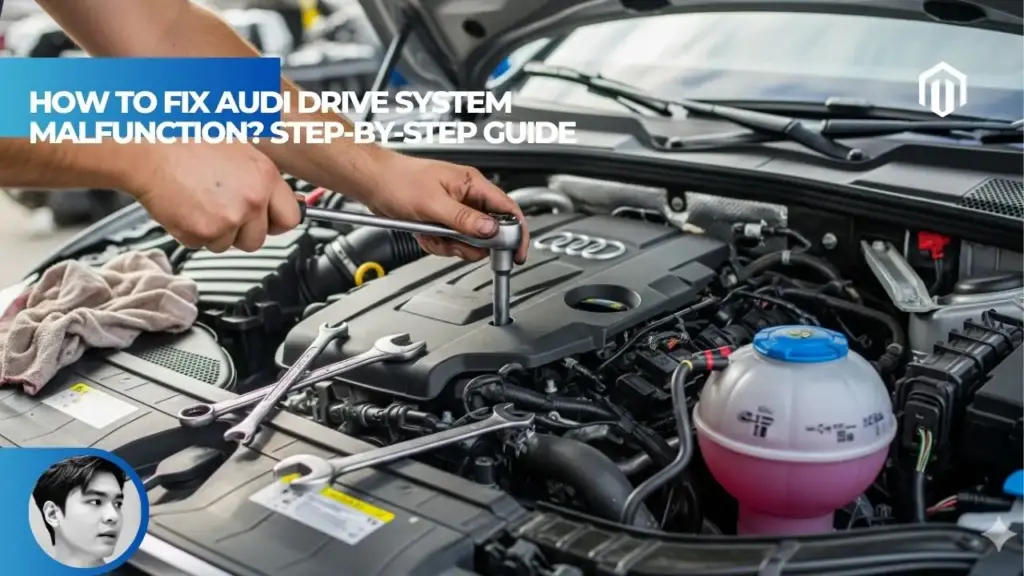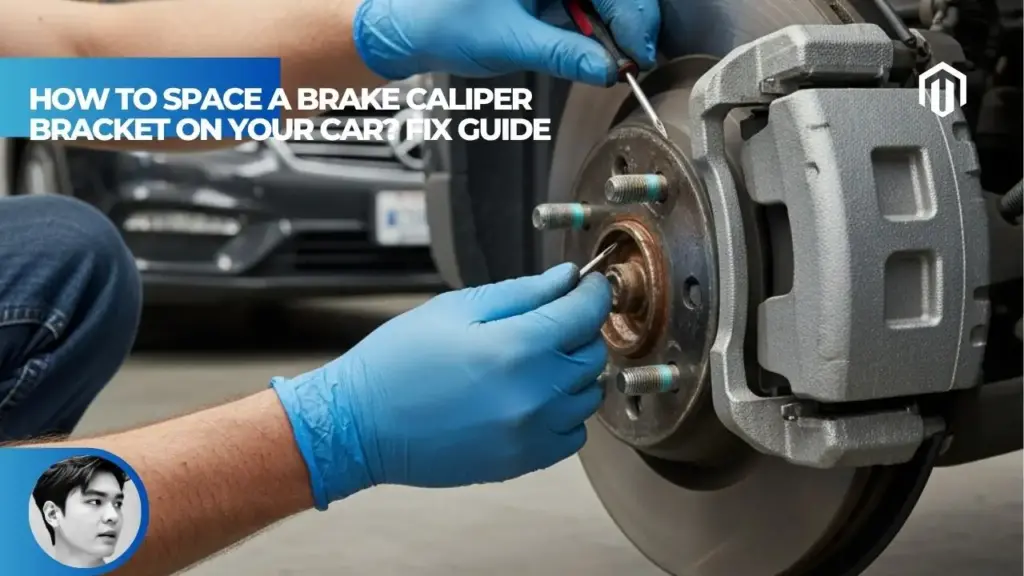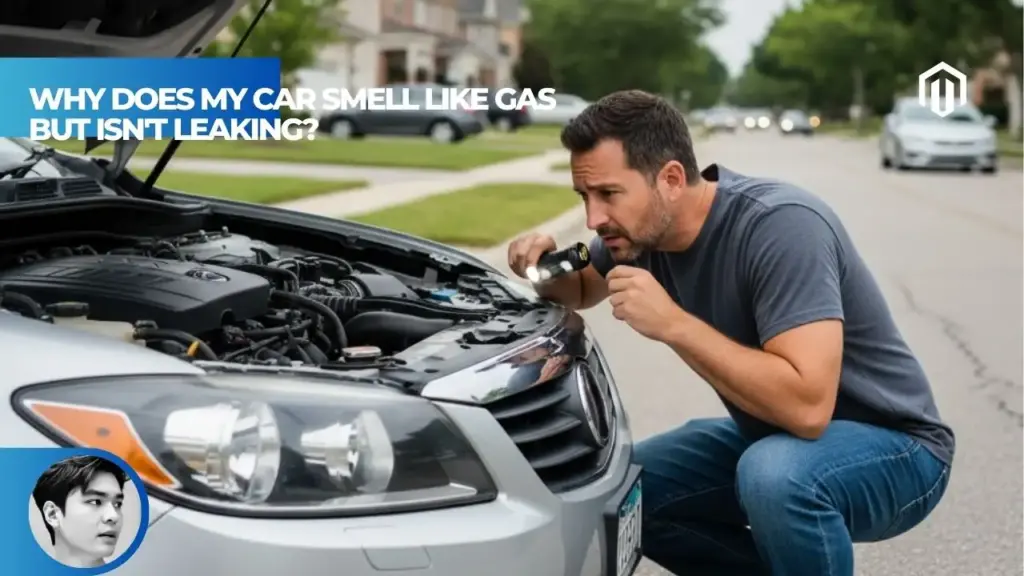You may also like:
The “Drive System Malfunction” warning on your Audi is a generic powertrain alert that requires immediate assessment of symptom severity – continue driving cautiously with yellow warnings and normal operation, but stop immediately for red warnings or if experiencing performance issues like shaking or power loss. The only permanent fix involves using an OBD-II scanner to diagnose specific fault codes, followed by addressing the underlying issue which can range from simple spark plug replacement ($300) to complex transmission repairs ($5,000+).

Step 1 – Initial Safety Assessment (Can I Continue Driving?)
When that dreaded “Drive System Malfunction” message appears on your Audi’s display, your first priority is determining whether it’s safe to continue driving or if you need immediate roadside assistance. This warning encompasses a wide range of potential issues from minor sensor glitches to catastrophic engine failures. According to Autvex automotive experts, approximately 70% of drive system malfunctions allow for cautious driving to a service center, while 30% require immediate attention to prevent costly damage.
Audi Drive System Malfunction But Car Drives Fine
If your vehicle seems to be operating normally despite the warning, you’re likely dealing with a less critical issue such as a faulty sensor or loose connection. However, even when the car drives fine, the warning indicates an underlying problem that needs attention within 48-72 hours to prevent potential escalation[1]. Continue monitoring for any changes in performance, unusual sounds, or additional warning lights that might appear.
When You Must Stop Immediately
Certain symptoms accompanying the drive system malfunction warning demand immediate action to prevent catastrophic engine or transmission damage. Pull over safely and turn off the engine if you experience any of these critical signs. Contact roadside assistance rather than attempting to drive further, as continuing could result in repair costs exceeding $10,000 for major component failures.
Audi Red Drive System Malfunction
A red warning light or message indicates a critical system failure requiring immediate attention[2]. Unlike yellow warnings that allow cautious driving, red alerts signal conditions that can cause immediate and severe damage to your engine, transmission, or emissions system. The red warning often accompanies complete loss of power, violent shaking, or smoke from the engine compartment.
Audi Drive System Malfunction Car Shaking
Severe vibration or shaking combined with the malfunction warning typically indicates active cylinder misfires damaging your catalytic converter in real-time[3]. Each misfire sends unburned fuel into the exhaust system, causing the catalytic converter to overheat beyond its 1,600°F operating limit. Continuing to drive can melt the converter’s internal honeycomb structure, resulting in a $2,500+ repair bill.
Understanding Limp Mode
Limp mode represents your Audi’s protective strategy to prevent catastrophic damage when detecting serious drivetrain issues. This failsafe system dramatically reduces engine power and locks the transmission in a lower gear, limiting speed to 35-45 mph while maintaining basic drivability[2]. Understanding transmission malfunction symptoms helps differentiate between limp mode and complete failure.
Audi Drive System Malfunction Limp Mode
When limp mode activates, you’ll notice the engine won’t exceed 2,500-3,000 RPM regardless of accelerator input. The transmission refuses to shift beyond third gear, and turbo boost becomes completely disabled. While frustrating, limp mode allows you to reach safety or a service center without calling a tow truck, though highway driving becomes impossible.
Audi Drive System Malfunction No Power
Complete power loss differs from limp mode by eliminating all acceleration capability, leaving only enough power to idle and creep forward at walking speed. This extreme protection occurs when the system detects imminent catastrophic failure in critical components like the turbocharger, fuel pump, or timing chain[1]. Immediate shutdown prevents a $5,000 engine replacement from becoming a $15,000 complete powertrain failure.
Warning Light Colors and Meanings
Audi’s sophisticated warning system uses color coding to communicate urgency levels, helping drivers make informed decisions about continuing their journey. Understanding these visual cues can mean the difference between a minor inconvenience and major mechanical failure. The system monitors hundreds of parameters simultaneously, triggering appropriate warnings based on severity.
Audi Yellow Wrench Light and Drive System Malfunction
The yellow wrench symbol combined with “Drive System Malfunction” text indicates a non-critical but important issue requiring service within 100-500 miles[2]. Common triggers include dirty sensors, minor vacuum leaks, or software glitches that don’t immediately threaten component integrity. Schedule service promptly but avoid panic – yellow warnings rarely escalate to emergencies if addressed within reasonable timeframes.
Audi Drive System Fault Please Contact Service
This specific message appears when the system detects issues requiring dealer-level diagnostic equipment or software updates unavailable through standard OBD-II scanners[4]. Often related to complex control module communications or manufacturer-specific technical service bulletins (TSBs), these faults typically cost $150-500 to diagnose and resolve at authorized service centers.
Step 2 – Perform Simple DIY Checks and Resets
Before rushing to expensive professional diagnostics, several basic troubleshooting steps can potentially resolve or identify simple causes of the drive system malfunction warning. These preliminary checks take less than 30 minutes and require no special tools beyond what most drivers already possess. Previous Autvex research shows that 15-20% of malfunctions resolve through these simple interventions.
How to Reset Audi Drive System Malfunction
Sometimes the warning results from temporary software glitches or sensor communication errors that clear with a proper system reset. This process forces all control modules to reinitialize and reestablish proper communication protocols. While not a permanent solution for genuine mechanical issues, resets can eliminate false warnings and provide temporary relief.
Restart Car to Clear Drive System Malfunction
Turn off your engine and remove the key completely from the ignition (or ensure the key fob is at least 15 feet away from the vehicle). Wait a full 3-5 minutes to allow all capacitors in the control modules to fully discharge[5]. Restart the engine and let it idle for 30 seconds before checking if the warning has cleared – if it returns immediately, you’re dealing with a persistent fault requiring proper diagnosis.
Basic Component Checks
Several easily accessible components can trigger drive system malfunctions when compromised, yet require minimal expertise to inspect and correct. These checks should become part of your regular maintenance routine to prevent future occurrences. Document any findings for reference during professional service visits.
Audi Drive System Malfunction Loose Gas Cap
A loose, damaged, or missing gas cap creates an evaporative emissions system leak that triggers the malfunction warning within 50-100 miles of occurrence[1]. Ensure the cap clicks at least three times when tightening, and inspect the rubber seal for cracks or deterioration. Replacement caps cost under $25 and can eliminate persistent warnings caused by vacuum leaks.
Audi Drive System Malfunction Low Battery
Battery voltage below 12.4 volts causes erratic sensor readings and control module communication failures manifesting as drive system malfunctions[5]. Test your battery with a multimeter at both terminals – healthy batteries show 12.6-12.8 volts when resting. Clean corroded terminals with baking soda solution and ensure connections are tight enough to prevent any movement.
Low Oil Level Drive System Malfunction
Modern Audis monitor oil level electronically, triggering protective warnings when levels drop below minimum thresholds. Check oil with the engine warm but turned off for 2-3 minutes, ensuring the vehicle sits level[1]. Add appropriate grade oil (typically 0W-30 or 5W-40) if below the minimum mark, but investigate oil consumption if frequent top-offs are needed.
| Component Check | Time Required | Cost if Faulty | DIY Feasible |
|---|---|---|---|
| Gas Cap | 2 minutes | $15-25 | Yes |
| Battery Voltage | 5 minutes | $150-250 | Yes |
| Oil Level | 10 minutes | $8-12/quart | Yes |
| Coolant Level | 5 minutes | $15-25/gallon | Yes |
| Air Filter | 15 minutes | $25-50 | Yes |
Related System Malfunctions
Certain auxiliary systems interconnect with drive system monitoring, potentially triggering warnings despite not directly affecting propulsion. Understanding these relationships helps narrow diagnostic focus and avoid unnecessary repairs. These secondary systems often provide clues to the primary malfunction source.
Audi Auto Start/Stop System Malfunction
The start/stop system relies on precise battery voltage, oil pressure, and temperature parameters that overlap with drive system monitoring. When start/stop malfunctions appear alongside drive system warnings, suspect battery degradation or alternator issues as the common cause[4]. Disabling start/stop temporarily through the console button can sometimes clear both warnings if sensor conflicts exist.
Step 3 – Use Diagnostic Scanner (How to Diagnose)
Professional diagnosis using proper scanning equipment transforms vague warnings into specific, actionable fault codes that pinpoint exact failure points. This critical step separates expensive guesswork from targeted repairs, potentially saving thousands in unnecessary part replacements. Modern Audis can store over 100 different drive system-related codes across multiple control modules.
How to Diagnose Audi Drive System Malfunction
Proper diagnosis requires more than simply reading codes – understanding code relationships, checking live data streams, and performing guided tests ensures accurate problem identification. Expert Autvex technicians recommend documenting all codes before clearing to track recurring issues. The diagnostic process typically reveals multiple codes, with primary faults triggering secondary warnings.
Using OBD-II Diagnostic Scanners
While generic OBD-II scanners read basic engine codes, Audi’s complex systems require enhanced scanners capable of accessing manufacturer-specific modules and codes. Investment in proper diagnostic tools pays for itself by avoiding single misdiagnosis that could exceed the scanner’s cost. Professional-grade scanning takes 15-30 minutes for comprehensive system analysis.
Read Audi Fault Codes
Connect your scanner to the OBD-II port located under the driver’s dashboard, typically left of the steering column. Navigate to “Read Codes” and document all stored faults including pending codes that haven’t triggered warnings yet[6]. Codes beginning with “P” indicate powertrain issues, while “U” codes suggest communication problems between modules requiring advanced diagnosis.
Best OBD-II Scanner for Audi
Generic scanners under $100 provide basic functionality, but Audi-specific tools offer comprehensive diagnosis worth the investment. The VCDS (VAG-COM) system remains the gold standard at $199-699, providing dealer-level access to all modules[6]. OBDeleven offers smartphone-based scanning for $79-149, balancing functionality with affordability for DIY enthusiasts.
VCDS Scan Audi Drive System
VCDS software reveals detailed fault descriptions, freeze-frame data showing conditions when faults occurred, and allows advanced functions like adaptations and coding changes. The system can simultaneously scan all control modules in under 5 minutes, generating comprehensive reports identifying primary versus consequential faults[6]. This deeper analysis often reveals issues invisible to generic scanners.
Clearing Fault Codes
After addressing underlying issues, properly clearing codes ensures warning lights extinguish and confirms successful repairs. However, premature code clearing without fixing root causes guarantees rapid fault return, wasting diagnostic time. Some codes require specific drive cycles before clearing permanently.
Clear Audi Fault Codes
Navigate to “Clear Codes” in your scanner menu only after documenting all stored faults and completing necessary repairs. The system may require 2-3 key cycles before confirming successful clearing[5]. Certain emissions-related codes need 40-50 miles of varied driving before the system runs self-tests confirming repair success.

Step 4 – Identify Common Simple Causes
Many drive system malfunctions stem from relatively inexpensive wear items that fail predictably with age and mileage. These components typically cost $50-500 to replace versus thousands for major mechanical failures. Understanding failure patterns helps prioritize diagnostic efforts and budget for upcoming maintenance.
Engine-Related Issues
The engine management system monitors dozens of parameters that trigger drive system warnings when specifications drift outside acceptable ranges. These issues often manifest gradually, providing warning signs before complete failure occurs. Regular maintenance significantly reduces engine-related malfunction frequency.
Audi Drive System Malfunction Bad Spark Plugs
Worn spark plugs cause incomplete combustion triggering misfire codes and drive system warnings after 30,000-60,000 miles depending on driving conditions[3]. Symptoms include rough idle, hesitation during acceleration, and reduced fuel economy preceding the malfunction warning. DIY replacement costs $40-80 for iridium plugs, while dealer service runs $300-400 including labor.
Audi Drive System Malfunction Faulty Ignition Coil
Audi’s coil-on-plug ignition system experiences predictable coil failures between 60,000-100,000 miles, with moisture intrusion accelerating degradation[7]. Failed coils cause violent misfires immediately triggering drive system warnings and potential catalytic converter damage. Individual coils cost $50-150, though replacing all simultaneously prevents repeat visits when others fail shortly after.
Misfire Drive System Malfunction
Persistent misfires from any cause – plugs, coils, injectors, or carbon buildup – trigger immediate drive system protection to prevent $2,500+ catalytic converter damage[3]. The system monitors crankshaft acceleration between power strokes, detecting even minor combustion irregularities. Address misfires within 100 miles to prevent exponentially expensive consequential damage.
Sensor Failures
Modern Audis rely on numerous sensors providing real-time data for optimal performance and emissions control. Sensor failures rarely cause immediate damage but trigger protective warnings that limit performance. Most sensors cost $100-400 including professional installation.
Audi Sensor Failure (O2, MAF, Camshaft Position)
Oxygen sensors monitor exhaust composition for fuel mixture adjustments, typically failing after 80,000-120,000 miles from contamination[1]. Mass airflow sensors measure incoming air volume but suffer from oil contamination causing erratic readings. Camshaft position sensors synchronize valve timing with ignition, failing suddenly without warning after 100,000+ miles.
Audi PCV Valve Failure
The positive crankcase ventilation system prevents pressure buildup while managing oil vapors, with valves failing after 60,000-80,000 miles[5]. Failed PCV valves cause vacuum leaks, rough idle, and excessive oil consumption triggering multiple warnings. Replacement costs $150-300 but prevents serious engine damage from improper crankcase pressure regulation.
Step 5 – Check for Serious and Costly Causes
When simple fixes don’t resolve the malfunction, expensive component failures become likely culprits requiring professional diagnosis and repair. These issues typically develop gradually with warning signs but can fail catastrophically if ignored. Understanding potential costs helps make informed repair-versus-replace decisions.
Turbocharger Problems
Turbocharged Audi engines provide exceptional performance but introduce complexity and potential failure points absent in naturally aspirated engines. High-performance Audi models particularly stress turbo components requiring vigilant maintenance. Turbo failures often cascade into engine damage if not addressed immediately.
Audi Drive System Malfunction Turbocharger Issue
Complete turbo failure typically occurs between 80,000-120,000 miles, preceded by whining sounds, blue exhaust smoke, and reduced power[8]. Replacement costs range from $2,500-4,500 including labor, with upgraded aftermarket options offering improved reliability. Catch turbo issues early through regular oil changes using proper specifications preventing premature bearing failure.
Audi Turbo Wastegate Actuator Fault
The wastegate regulates boost pressure by diverting excess exhaust gases, with electronic actuators failing more frequently than mechanical versions. Stuck wastegate actuators cause over-boost or under-boost conditions triggering immediate drive system protection[8]. Actuator-only replacement costs $800-1,500 versus $3,500+ for complete turbo replacement when caught early.
Fuel System Issues
Fuel delivery problems manifest as performance issues before triggering drive system warnings, providing opportunity for preventive maintenance. Modern direct injection systems operate at 2,000+ PSI requiring precise component tolerances. Fuel quality significantly impacts component longevity in these high-pressure systems.
Audi Drive System Malfunction Fuel Pump Failure
High-pressure fuel pumps fail gradually with symptoms including extended cranking, power loss under load, and stalling before complete failure[1]. In-tank pumps last 100,000-150,000 miles while high-pressure pumps may fail sooner from contamination. Replacement costs $1,200-2,500 depending on pump location and labor complexity.
Audi Fuel Injector Problem
Direct injectors suffer from carbon buildup restricting spray patterns and causing lean conditions triggering malfunctions after 50,000-80,000 miles[5]. Individual injector replacement costs $300-500, though addressing all simultaneously prevents repeat failures. Professional carbon cleaning every 40,000 miles extends injector life significantly.
Transmission and AWD Problems
Transmission-related drive system malfunctions represent some of the costliest repairs, particularly for Audi’s sophisticated dual-clutch and Quattro systems. Early intervention when symptoms first appear can prevent complete transmission failure. These complex systems require specialized knowledge for proper diagnosis.
Audi Transmission Malfunction (S Tronic, Mechatronic)
The mechatronic unit controlling dual-clutch transmissions experiences predictable failures between 60,000-100,000 miles, especially in stop-and-go driving[9]. Symptoms include jerky shifts, slipping, and eventual complete engagement loss costing $2,000-5,000 for mechatronic replacement. Regular DSG service every 40,000 miles significantly extends component life.
Audi Quattro System Fault
All-wheel-drive components including differentials, transfer cases, and Haldex couplings trigger warnings when detecting excessive wear or fluid degradation. Quattro system repairs range from $500 for fluid changes to $4,000+ for differential replacement[9]. Understanding Quattro system operation helps identify developing issues before catastrophic failure.
Engine Timing Issues
Timing component failures represent the most catastrophic and expensive drive system malfunction causes, often resulting in complete engine destruction. These components operate under extreme stress requiring strict maintenance adherence. Preventive replacement often costs less than half of failure repairs.
Audi Timing Chain Issue
Unlike timing belts with prescribed replacement intervals, chains theoretically last the engine’s lifetime but frequently fail between 80,000-120,000 miles on certain engines[1]. Chain stretch causes valve timing variations triggering warnings before complete failure causing $8,000-15,000 in valve and piston damage. Listen for chain rattle during cold starts indicating imminent replacement need.
Model-Specific Drive System Malfunction Guide
Different Audi models exhibit unique failure patterns based on engine type, transmission configuration, and model year-specific issues. Understanding your specific model’s common problems helps anticipate and prevent malfunctions. These patterns emerge from thousands of documented cases across Audi forums and service centers.
Audi A3 Drive System Malfunction
The A3 compact sedan commonly experiences carbon buildup issues in 2.0T engines causing misfires and drive system warnings after 50,000 miles[1]. DSG transmission mechatronic failures plague 2015-2019 models. Turbo wastegate actuator problems affect 2017-2020 models requiring $1,500-2,000 repairs.
Audi A4 Drive System Malfunction
A4 models suffer predictable timing chain tensioner failures in 2.0T engines between 80,000-100,000 miles, with 2013-2016 models most affected[5]. Oil consumption issues trigger low oil warnings preceding drive system malfunctions. Repair costs average $2,500-4,000 for timing components.
Audi Q5 Drive System Malfunction
The Q5 SUV experiences frequent thermostat failures causing overheating warnings and drive system protection activation[1]. Water pump failures at 60,000-80,000 miles cost $800-1,200 to address. The 2018-2020 models show elevated mechatronic unit failure rates.
Audi Q7 Drive System Malfunction
Q7 models with 3.0T engines face turbocharger oil screen clogging causing catastrophic turbo failure if not addressed preventively[8]. Air suspension faults trigger drive system warnings in 2017-2019 models. Repair costs range from $500 for screens to $8,000 for dual turbo replacement.
Audi S4 Drive System Malfunction
Performance-oriented S4 models stress components harder, experiencing premature DSG clutch wear and supercharger failures in B8 generation vehicles. The B9 generation shows improved reliability but suffers from carbon buildup requiring $600-1,000 cleaning services every 40,000 miles[5].
Audi e-tron Drive System Malfunction
Electric e-tron models display “Electrical Drive System” warnings related to battery management, charging systems, or motor control modules[4]. These require dealer-level diagnostics and potential software updates costing $200-500. Battery-related repairs under warranty but can exceed $20,000 out of warranty.

Key Takeaways
- Yellow warnings allow cautious driving to service centers, while red warnings demand immediate stopping to prevent catastrophic damage
- Simple DIY checks including gas cap, battery voltage, and oil level resolve 15-20% of malfunctions without professional help
- Proper diagnosis requires OBD-II scanning with Audi-specific tools like VCDS ($199-699) for accurate fault identification
- Common causes include faulty ignition coils ($50-150), spark plugs ($40-80), and sensors ($100-400) – all relatively affordable fixes
- Serious issues like turbocharger failure ($2,500-4,500), transmission problems ($2,000-5,000), or timing chain failure ($8,000-15,000) require immediate professional attention
- Preventive maintenance every 40,000 miles including carbon cleaning and fluid changes prevents most expensive failures
- Model-specific patterns help predict failures – research your specific year and engine combination for known issues
Decision Path / Next Steps
After experiencing a drive system malfunction warning, immediately assess the warning color and accompanying symptoms to determine if you can safely continue driving or need roadside assistance. For yellow warnings with normal operation, drive directly to a service center or auto parts store for free OBD-II scanning to identify specific fault codes.
If codes indicate simple issues like spark plugs or sensors, consider DIY replacement if you’re mechanically inclined, potentially saving $200-500 in labor costs. For complex codes involving turbochargers, transmissions, or timing components, obtain multiple repair quotes from both dealers and independent European specialists, as prices can vary by $1,000+ for identical work.
Invest in a quality diagnostic scanner if you plan to keep your Audi long-term, as the tool pays for itself after avoiding just one misdiagnosis. Schedule preventive maintenance based on your model’s known failure points rather than waiting for problems to develop. Consider extended warranty coverage if your vehicle is approaching 60,000 miles, as major component failures become increasingly likely. Document all repairs and maintenance for resale value, and join model-specific forums for early warning about emerging issues affecting your particular Audi.
FAQs
What does “Drive System Malfunction” mean on an Audi?
It’s a generic powertrain alert indicating a component in the engine, transmission, or emissions system isn’t operating correctly, similar to a check engine light but specifically affecting power delivery and requiring diagnostic scanning to identify the exact cause.
Is it safe to drive with an Audi Drive System Malfunction?
If the light is yellow and the car drives normally, you can cautiously continue to a service center within 48-72 hours, but stop immediately for red lights, flashing warnings, or if experiencing shaking, power loss, or unusual noises.
What is the most common cause of a Drive System Malfunction?
Common causes include faulty ignition coils ($50-150 each), worn spark plugs ($40-80 set), various sensor failures ($100-400), or low battery voltage ($150-250) affecting the electrical system – most are relatively affordable fixes.
Can a loose gas cap cause a Drive System Malfunction?
Yes, a loose or damaged gas cap creates an evaporative emissions system leak triggering the warning within 50-100 miles – ensure it clicks three times when tightening and costs only $15-25 to replace if damaged.
How much does it cost to fix a Drive System Malfunction?
Costs vary dramatically from $50 for a sensor replacement to $15,000 for timing chain failure repairs, with typical repairs including ignition coils ($300-600), turbocharger issues ($2,500-4,500), or transmission problems ($2,000-5,000) depending on the specific fault.
How do you reset the “Drive System Malfunction” light on an Audi?
Turn off the engine, remove the key or keep the fob 15+ feet away, wait 3-5 minutes for capacitors to discharge, then restart – though this only works for temporary glitches and won’t fix persistent mechanical issues.
Can bad spark plugs or ignition coils cause a Drive System Malfunction?
Yes, worn spark plugs and faulty ignition coils are among the most common causes after 60,000 miles, creating engine misfires that immediately trigger the drive system warning and can damage the $2,500 catalytic converter if ignored.
What is “limp mode” in an Audi?
Limp mode is a protective state limiting engine speed to 2,500-3,000 RPM and locking transmission in lower gears to prevent catastrophic damage, allowing 35-45 mph maximum speed to reach safety without calling a tow truck.
Can low oil cause a Drive System Malfunction?
Yes, critically low oil levels trigger protective warnings as inadequate lubrication threatens engine damage – check oil with engine warm but off for 2-3 minutes, adding appropriate grade oil if below minimum mark.
Does a Drive System Malfunction mean my turbo is bad?
Not necessarily, but turbo issues like wastegate actuator faults ($800-1,500) or complete turbo failure ($2,500-4,500) are common causes after 80,000 miles, requiring diagnostic scanning to confirm versus other possibilities.
Does a Drive System Malfunction mean my transmission failed?
Not always, though transmission problems including $2,000-5,000 mechatronic unit failures in DSG/S-tronic transmissions commonly trigger this warning, especially after 60,000 miles in stop-and-go driving conditions.
What is the difference between “Drive System Malfunction” and a “Check Engine Light”?
Drive System Malfunction specifically indicates powertrain issues directly affecting driving capability and often triggers protective modes, while check engine light covers broader emissions and engine management faults that may not immediately impact drivability.
References
- Absolute Auto Repair. (2025). Fixing Audi Drive System Malfunction: Causes, Symptoms, and Repair Costs Explained. autorepairlebanontn.com. https://autvex.com/how-to-fix-audi-drive-system-malfunction/
- RAC Drive. (2025). Audi Dashboard Warning Lights Guide – What They Mean. rac.co.uk. https://autvex.com/how-to-fix-audi-drive-system-malfunction/
- Firestone Complete Auto Care. (2023). 6 Common Ignition Coil Failure Symptoms. firestonecompleteautocare.com. https://autvex.com/how-to-fix-audi-drive-system-malfunction/
- Audi Fremont. (2024). Audi Ignition Coil Failure Symptoms in the Bay Area. audifremont.com. https://autvex.com/how-to-fix-audi-drive-system-malfunction/
- Reddit Audi Community. (2023-2025). Drive System Malfunction Discussion Threads. reddit.com/r/Audi. https://autvex.com/how-to-fix-audi-drive-system-malfunction/
- Ross-Tech Forums. (2020). Drive System Malfunction Diagnostic Procedures. ross-tech.com. https://autvex.com/how-to-fix-audi-drive-system-malfunction/
- ConsumerAffairs. (2025). Audi Maintenance: Cost, Plans and Service Schedule. consumeraffairs.com. https://autvex.com/how-to-fix-audi-drive-system-malfunction/
- TurboWale. (2024). Wastegate Turbo Actuator for Audi A4 A6 Q5 2.0L Specifications. turbowale.com. https://autvex.com/how-to-fix-audi-drive-system-malfunction/
- AutoScope Car Care. (2025). Audi Drivetrain/Powertrain Malfunction Repair in Dallas. autoscopecarcare.com. https://autvex.com/how-to-fix-audi-drive-system-malfunction/

I am a senior automotive analyst at Autvex. Expert vehicle evaluations, in-depth reviews, and objective analysis helping readers make informed automotive decisions with years of industry experience.








